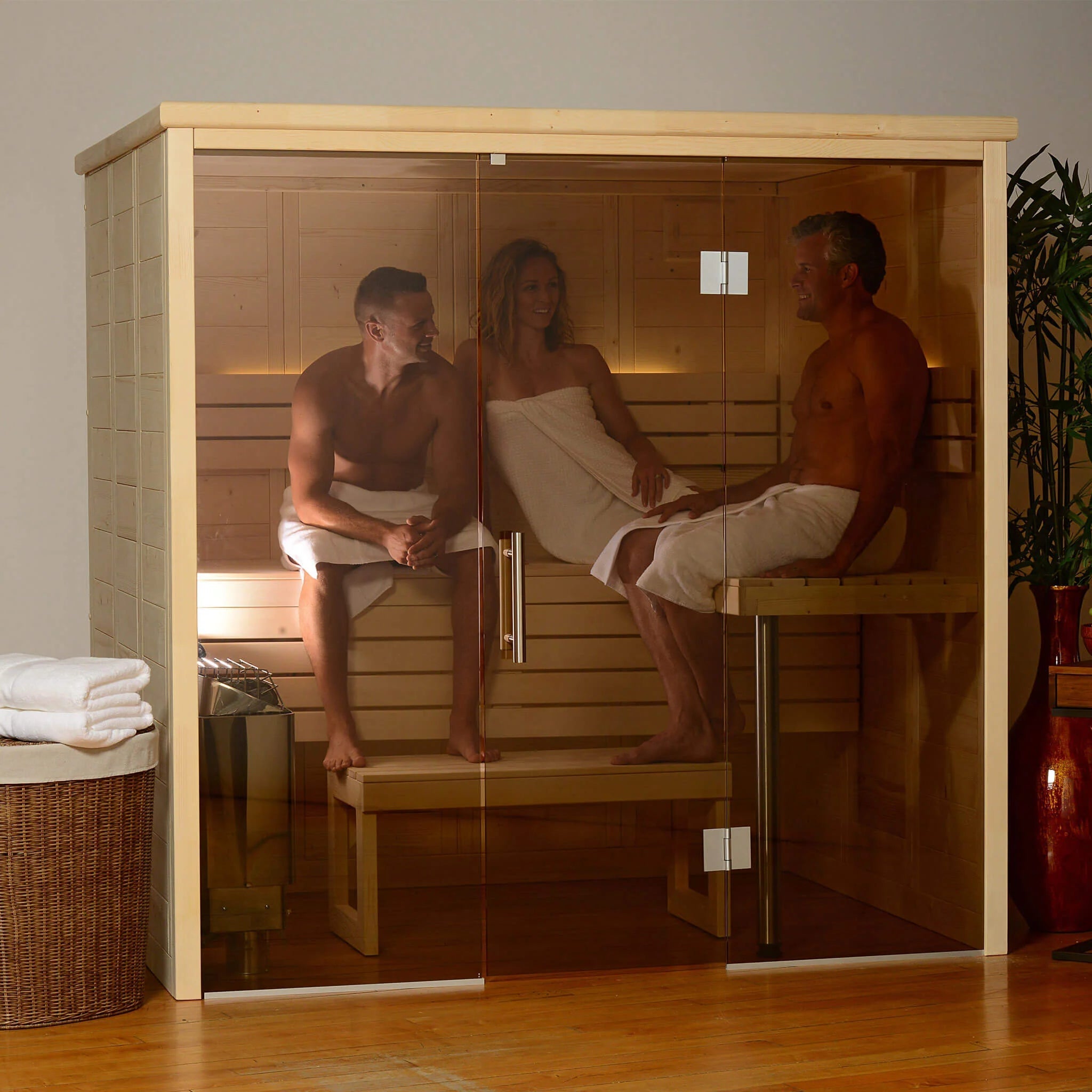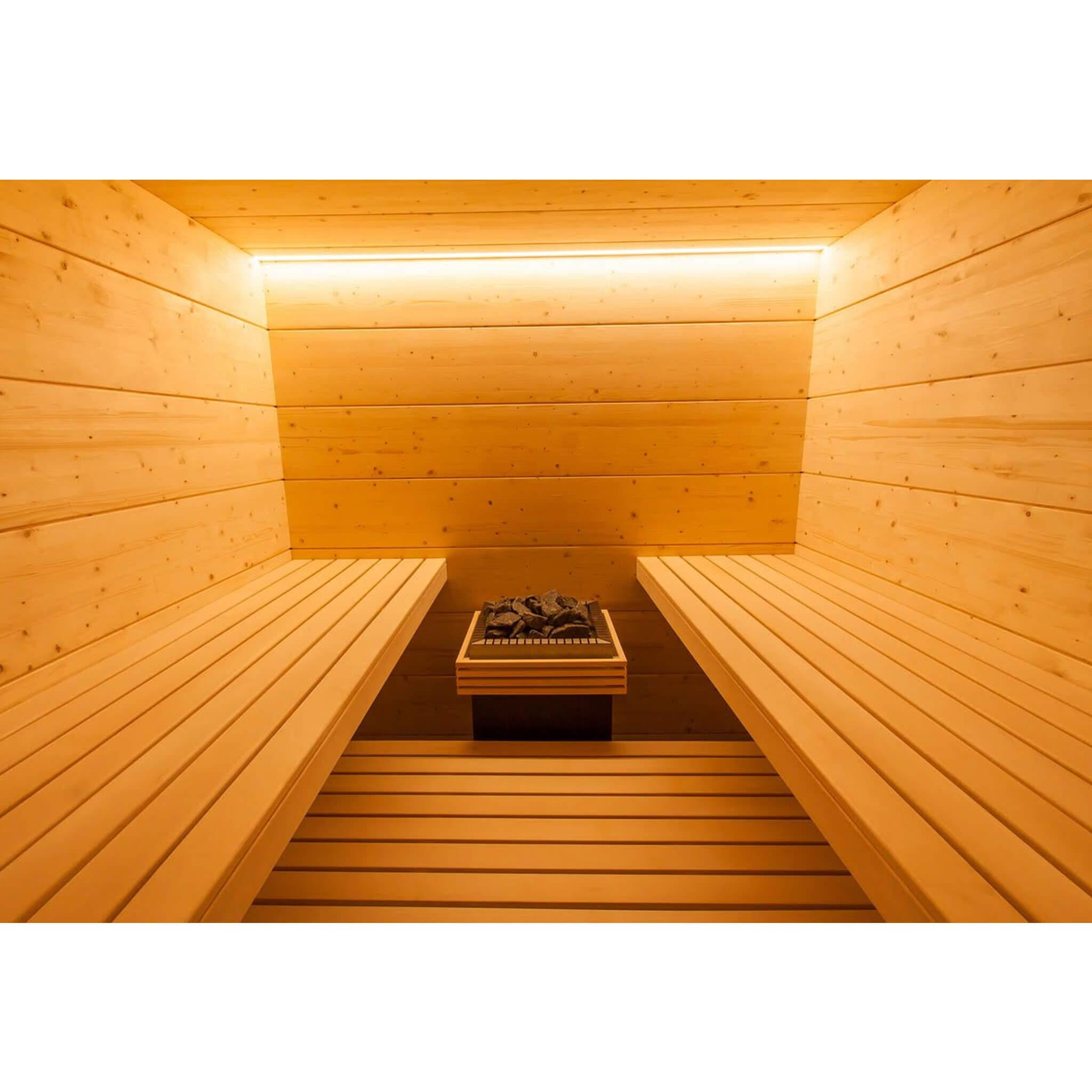Traditional Sauna Things To Know Before You Buy
Traditional Sauna Things To Know Before You Buy
Blog Article
Traditional Sauna for Beginners
Table of ContentsLittle Known Facts About Traditional Sauna.Traditional Sauna Fundamentals ExplainedGetting The Traditional Sauna To WorkWhat Does Traditional Sauna Mean?The Ultimate Guide To Traditional Sauna
A lot of the weight lost in a sauna is water loss and is re-gained upon rehydrating. Without an uncertainty sauna can be an important component of a healthy weight loss program. To look at the differences in between typical and IR saunas, I will divide these right into proven, theoretical, and produced differences.Thus, the best factor in the saunawhich is at the ceiling straight above the sauna heateris commonly between 185 and 190 F. Claims that a traditional sauna exceeds 200 F is simply not real and not suitable for electrical saunas sold in the US. The temperature for a far-infrared sauna is normally set between 120 and 140 F; nonetheless, unlike the typical sauna, the goal in and IR area is not to achieve a heat.

When a typical sauna has been properly heated, the sauna wall surfaces are warm, the air temperature has attained set temperature level and the rocks are very heated. As an interesting side note, the warmed walls and the rocks are emitting far-infrared warmth, incorporated with the heated air, to produce an "enveloping warmth".
The Facts About Traditional Sauna Uncovered
When the high temperature is accomplished, the components cycle on and off to maintain the high temperature level. Many typical sauna users appreciate putting water over the rocks to produce vapor to elevate sauna humidity levels. The benefits of pouring water over the rocks consist of: making the area more comfortable, moistening the nasal flows, and permitting the use of aromatherapy by blending essential oils with the water.

When the energy gets in the body, it causes the body temperature to raise and inevitably leads to sweating. In an infrared sauna it's crucial for the emitters/heaters to stay on virtually constantly. Because there is click here for more info no mass of rocks to preserve warm, the sauna will cool if the emitters shut off.
How Traditional Sauna can Save You Time, Stress, and Money.
As discussed above, the sauna bather in an infrared area intends to position himself in front of operating emitters to get maximum advantage from the warmth. The home heating time for the two rooms can be very various, depending on how the spaces are used. For a standard sauna, a bather needs to enable 30-40 minutes for the space to attain a wanted temperature level and to appropriately pre-heat the rocks.

A well built sauna will commonly accomplish a temperature of 150-160 F in concerning 30-40 minutes. For hotter temperature levels, the room might require to warmth for a longer period.
To some, 15 minutes was "lost" while the infrared power heated up the timber panels instead of warming a body, while others discover a pre-heated room to be a lot more comfortable and think a raised beginning temperature level is essential to begin perspiring. The size of suggested use for every area is around the very same (10-15 mins per session); nevertheless, due to the reduced air temperature levels and web the capability to feel the effects of infrared warmth much faster than a standard sauna, it is not unusual for an individual to invest a total of 20-30 mins in an infrared sauna.
An Unbiased View of Traditional Sauna

The average expense per kWH of electrical energy in the U.S. is roughly $0.11, so a 4.5 kW heater will certainly cost roughly $.50 to compete one hour, if the heating system runs continually for one hour. Typically a sauna heating unit will certainly run for 75% of the first hour and 50% of succeeding hours on since the elements cycle once the set temperature level is attained.
A 2 person far-infrared room is usually physically smaller sized than a typical sauna, usually regarding 4' x 4' or smaller. The IR home heating system is typically 1.5-1.7 kW making use of a 120 volt 15 amp plug-in service. Considering that the area can be utilized quicker than a sauna room, we will presume the space is made use of for to of an hour consisting of warm up time.
There is a seldom reviewed difference in the social experience in between the two areas. While our culture has actually shed some of the social advantage of the traditional sauna experience, go to this website it can be extremely socially fulfilling (Traditional Sauna). From family time in the sauna, to heart-felt discussions with loved ones, to sauna partiesthe standard sauna experience can lead to intimate socializing
Some Known Incorrect Statements About Traditional Sauna
A lot of greater end infrared rooms consist of colored light treatment, sound systems and full-glass fronts.
Report this page